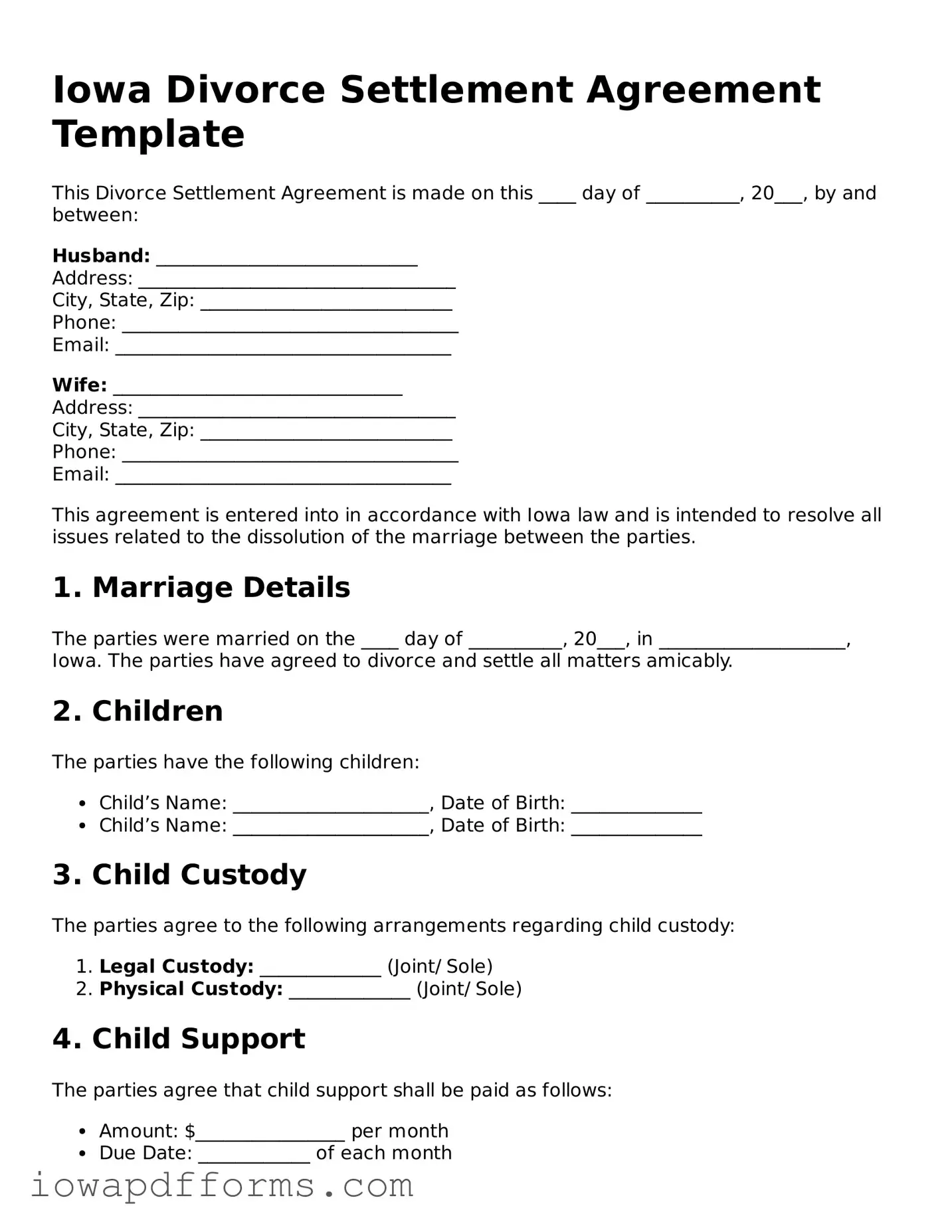Iowa Divorce Settlement Agreement Template
This Divorce Settlement Agreement is made on this ____ day of __________, 20___, by and between:
Husband: ____________________________
Address: __________________________________
City, State, Zip: ___________________________
Phone: ____________________________________
Email: ____________________________________
Wife: _______________________________
Address: __________________________________
City, State, Zip: ___________________________
Phone: ____________________________________
Email: ____________________________________
This agreement is entered into in accordance with Iowa law and is intended to resolve all issues related to the dissolution of the marriage between the parties.
1. Marriage Details
The parties were married on the ____ day of __________, 20___, in ____________________, Iowa. The parties have agreed to divorce and settle all matters amicably.
2. Children
The parties have the following children:
- Child’s Name: _____________________, Date of Birth: ______________
- Child’s Name: _____________________, Date of Birth: ______________
3. Child Custody
The parties agree to the following arrangements regarding child custody:
- Legal Custody: _____________ (Joint/ Sole)
- Physical Custody: _____________ (Joint/ Sole)
4. Child Support
The parties agree that child support shall be paid as follows:
- Amount: $________________ per month
- Due Date: ____________ of each month
5. Division of Assets
The parties agree to divide their assets as follows:
- Husband's Assets: _____________________________
- Wife's Assets: ________________________________
6. Division of Debts
The parties agree to the division of debts as follows:
- Husband's Debts: ________________________________
- Wife's Debts: __________________________________
7. Spousal Support
The parties agree on the issue of spousal support as follows:
Amount: $______________ per month
Duration: _______________ months/years
8. Miscellaneous Provisions
- This agreement represents the complete understanding between the parties.
- The agreement can only be modified in writing, signed by both parties.
- Each party acknowledges that they have had the opportunity to consult with legal counsel.
Each party acknowledges that they have read and understood this agreement before signing it. This agreement is signed voluntarily without any duress or undue influence.
Signed this ____ day of __________, 20___.
Husband's Signature: ___________________________
Wife's Signature: ________________________________
